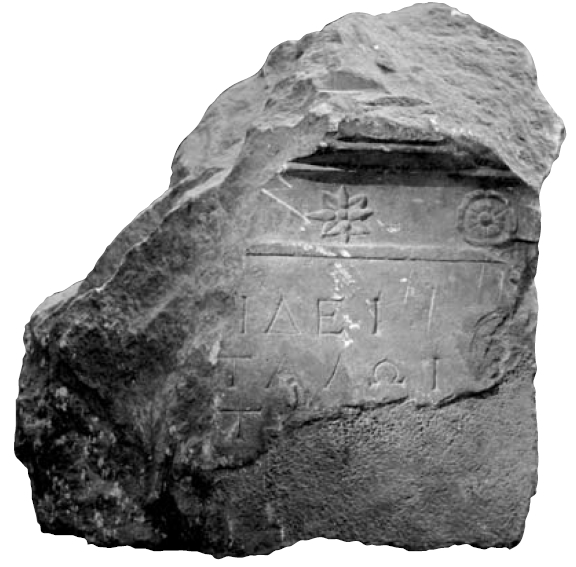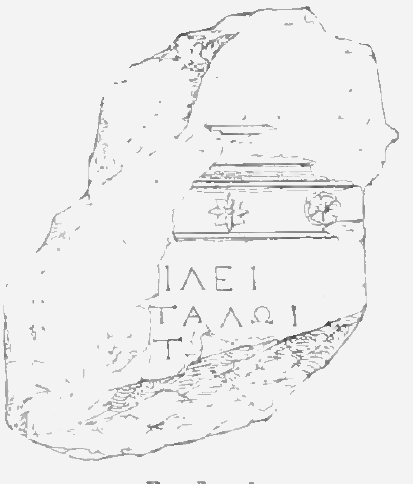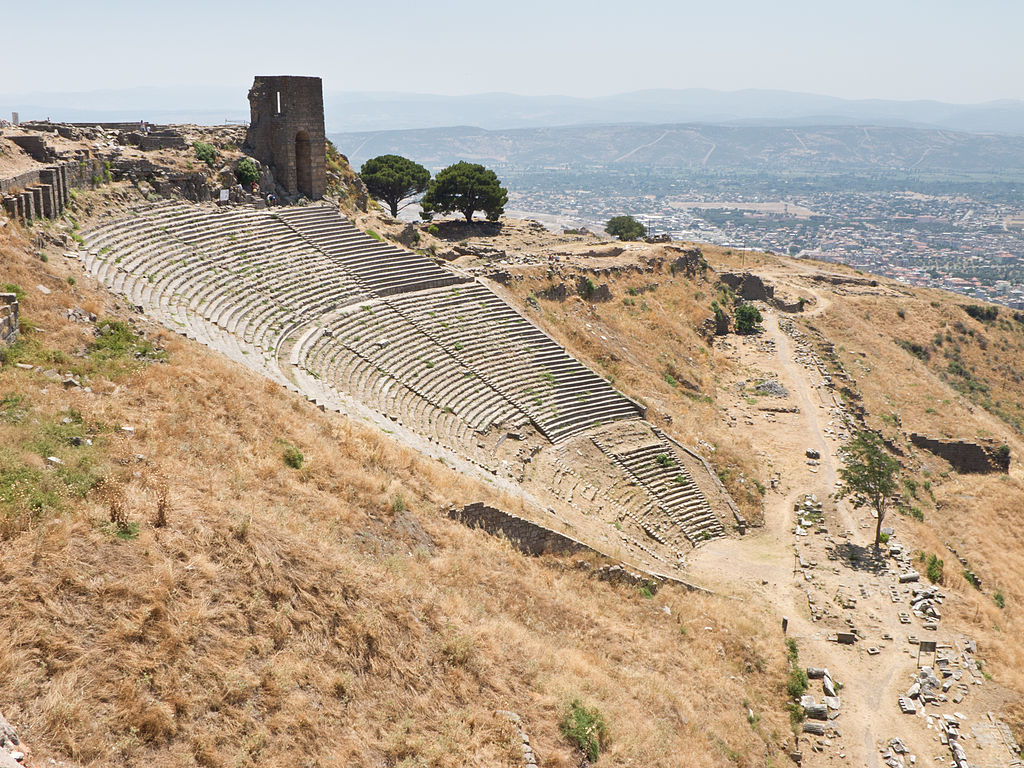Text elegantly written in three lines centred on the writing surface. Line 1 is slightly higher than the others.
Carefully engraved letters with slight thickening at the end of hastae. A with horizontal bar. Ω written slightly above the line and smaller than the rest of characters.
The letter shape can point to the reign of Attalos I, but due to the conservative style of this type of elegant writing, a slightly later date cannot be ruled out.
The stonecutter erroneously carved ΒΑΣΙΔΕΙ, which may be surprising in relation to the quality of the altar; yet cf. PHRC004 (thesauros in the sanctuary of the Egyptian gods in Thera) for a similar mistake (BΑΣΙΑΙΣΤΑΙ) on an otherwise carefully written dedication.
Letter of the same height in each line (2,5 cm for line 1; 2 cm for lines 2-3),
with the exception of Ω at line 2, which is written slightly above the line and measures 1,5 cm.







